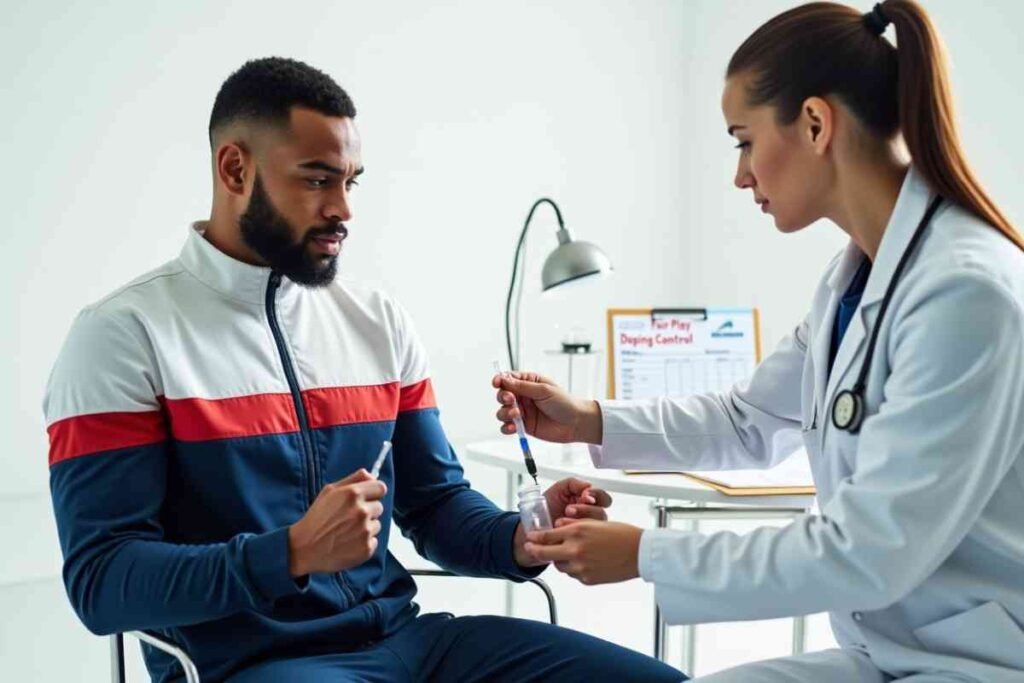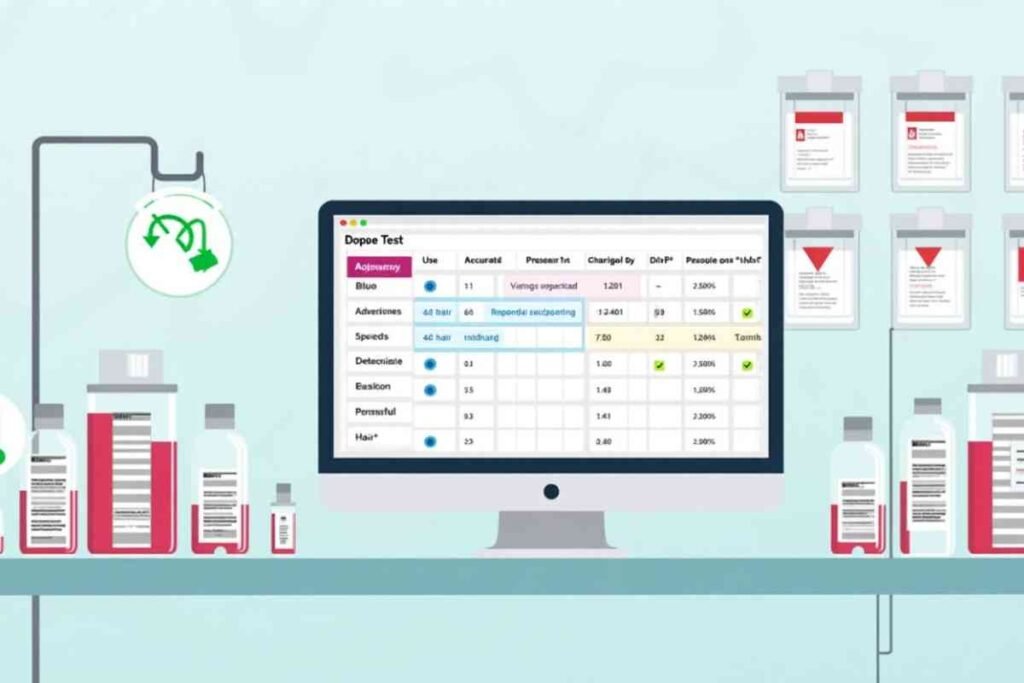Which dope test is best? When it comes to identifying banned substances dope tests are designed to detect drugs or performance enhancers in the body through urine blood or hair analysis.
Each method has its own accuracy speed and reliability making it important to choose the right one depending on the purpose and setting.
If you want to know which dope test gives the most trustworthy results keep reading this article for a complete and clear guide..
Understanding Dope Tests

Which dope test is best? are medical examinations used to detect banned substances or performance enhancing drugs in the body. These tests are most commonly conducted in sports to ensure fair competition and protect athletes health.
Substances such as steroids stimulants and narcotics can be identified through different testing methods. Urine and blood samples are the most widely used, but hair and saliva may also be tested in some cases.
The main purpose of a dope test is to maintain integrity safety and fairness in competitions. Understanding dope tests helps people realize their importance in promoting clean and ethical sports.
What is a Dope Test?
A dope test, commonly called a drug test is a medical or laboratory process used to detect the presence of illicit substances or the misuse of prescription medications.
Which dope test is best? can involve urine blood saliva hair sweat or breath samples. Each method has its own advantages and limitations which is why the discussion about Which dope test is best? is so important.
Why Dope Tests are Conducted?
Which dope test is best? are not limited to identifying addiction alone. They are used in diverse areas such as:
- Employment screenings where companies maintain a drug free workplace.
- Competitive sports to ensure fairness and prevent doping violations.
- Legal and forensic cases involving accidents criminal investigations or probation monitoring.
- Hospitals and emergency care where overdoses need quick diagnosis.
- Schools or community programs aimed at reducing youth drug use.
The wide applications make it crucial to understand which testing method delivers the most accurate and timely results.
Types of Dope Tests
Types of dope tests include urine blood saliva and hair analysis each designed to detect banned drugs or performance enhancers in the body. These tests help ensure fairness safety and integrity in sports and other fields.
Urine Dope Tests
Urine drug testing is the most common method used globally. It detects a wide range of substances including marijuana cocaine opioids amphetamines barbiturates and benzodiazepines. Urine tests are cost effective and easy to administer making them a frequent choice in workplaces and schools.
However the detection window is limited usually between one and seven days except for marijuana which can be detectable for weeks.
When comparing methods many ask whether urine is the answer to Which dope test is best? While popular it may not always provide the deepest history of use.
Blood Dope Tests
Blood drug tests are highly accurate because they directly measure the active presence of drugs in the bloodstream. Unlike urine which shows past use blood tests reveal current intoxication or influence.
This makes them useful in accident cases or medical emergencies where real time data matters.The downside is that blood tests are invasive more expensive and have a short detection window of hours to a couple of days.
Despite this, when precision is the main concern blood tests often compete strongly for the title of Which dope test is best?
Saliva Dope Tests
Saliva or oral fluid tests are becoming increasingly popular due to their non invasive collection method. They can detect recent use of substances like cocaine marijuana and opioids. Saliva tests are often used roadside by law enforcement to check for impaired driving.
Their detection window is relatively short usually up to 48 hours but they are convenient and harder to tamper with compared to urine. For rapid and hassle-free results saliva testing has its place in the conversation about Which dope test is best?
Hair Dope Tests
Hair follicle tests provide the longest detection window often identifying drug use up to 90 days or more. This method is particularly valuable in cases where long term patterns of drug use are under investigation such as court cases or professional licensing evaluations.
Although accurate for history hair tests do not effectively detect immediate or recent use. They are also more expensive and require specialized labs.
Yet, for tracking consistent abuse many argue hair testing answers the question of Which dope test is best? for long term monitoring.
Sweat Dope Tests
Sweat patches are less common but can continuously monitor drug use over a period of one to two weeks. They are sometimes used in probation programs or clinical monitoring. While not as mainstream as urine or blood sweat testing provides unique insights into ongoing substance use.
Breath Tests for Alcohol
When discussing Which dope test is best? alcohol requires special attention. Breathalyzers are fast portable and widely used by police for roadside testing.
While they are reliable for detecting current alcohol impairment they are limited to alcohol alone and cannot identify other drugs.
Factors that Decide Which Dope Test is Best
Factors that decide which dope test is best depend on accuracy detection window and type of substance being tested. The choice also varies based on cost convenience and the purpose of testing.
Accuracy and Reliability
Blood and hair tests generally rank highest in accuracy with gas chromatography/mass spectrometry confirmation offering gold-standard reliability. Urine and saliva are reliable but slightly more prone to false positives often requiring confirmatory testing.
Detection Window
Which dope test is best? the goal is to know about immediate impairment blood or saliva is best. If long term history is needed hair testing leads the way. Urine remains a middle ground with moderate detection periods.
Cost and Convenience
Urine tests are inexpensive and easy to administer. Saliva is also affordable but slightly less common. Blood and hair tests are more costly but justified when precision is essential.
Risk of Tampering
Urine tests are most vulnerable to tampering through dilution or substitution. Hair and saliva are harder to cheat which adds to their reliability.
Which Dope Test is Best for Different Purposes?

Which dope test is best? for different purposes depends on the goal as urine tests are common for quick checks while blood and hair tests are used for more detailed results. Each method is chosen based on accuracy detection window and testing needs.
Workplace Testing
In workplaces the most common choice is urine testing because it is affordable and can detect a wide range of drugs. However some industries adopt saliva or hair tests to minimize cheating and extend detection.
Sports and Athletics
Athletic organizations often rely on urine tests for routine screening but use blood tests for doping control especially when testing for anabolic steroids or performance enhancing drugs. In this field a mix of methods determines Which dope test is best?
Legal and Forensic Cases
Courts often favor hair and blood tests for their accuracy and detailed insights. Blood is crucial for proving intoxication at the time of an accident while hair provides evidence of long term abuse.
Medical and Emergency Care
Hospitals prefer blood or urine tests. Blood is essential for emergencies where immediate impairment must be assessed whereas urine offers a broad drug panel for general diagnosis.
Rehabilitation Programs
Rehab centers may use a combination of urine and sweat patch tests to track ongoing abstinence or relapse.
The Challenge of False Positives
An important aspect of deciding Which dope test is best? involves understanding the risk of false positives. Over the counter cold medications poppy seeds or certain prescriptions can lead to misleading results.
This is why confirmatory testing with advanced techniques like gas chromatography and mass spectrometry is often required.
Both articles are closely connected as the first explains which dope test is best for different purposes while the second details what a dope test is its history and global practices together giving a complete understanding of dope testing.
Conclusion
The answer to Which dope test is best? depends on the purpose accuracy and detection window you need. Urine tests remain the most common and cost effective choice while blood tests give precise results for current drug use.
Saliva tests offer quick and convenient detection whereas hair tests provide a detailed long term history. Sweat and breath tests also play important roles in specific cases.
No single method is perfect which is why the best dope test is the one that fits your exact situation. By understanding each option you can choose the most reliable test with confidence.
FAQs
What is the purpose of a dope test?
A dope test is conducted to detect banned substances or drugs in the body. It helps ensure fairness in sports, workplace safety, and accurate medical or legal assessments.
Which dope test is most commonly used?
Urine testing is the most common method because it is cost-effective, easy to administer, and can detect a wide range of drugs.
How accurate are blood dope tests?
Blood tests are highly accurate as they measure the active presence of drugs in the bloodstream. They are often used in emergencies or legal cases where precision is crucial.
What is the detection window for hair dope tests?
Hair tests can detect drug use for up to 90 days or more, making them effective for tracking long-term substance use patterns.
Can saliva tests be used for roadside checks?
Yes, saliva tests are frequently used by law enforcement during roadside checks. They are non-invasive and detect recent drug use within 24–48 hours.
Why are urine tests sometimes criticized?
Although widely used, urine tests have a shorter detection window and are more prone to tampering compared to hair or saliva tests.
Which dope test is best for sports?
Sports organizations often use urine tests for routine checks but rely on blood tests for detecting steroids and performance-enhancing drugs.
Can dope tests give false positives?
Yes, false positives may occur due to medications, certain foods, or supplements. That’s why confirmatory testing with advanced methods is often required.